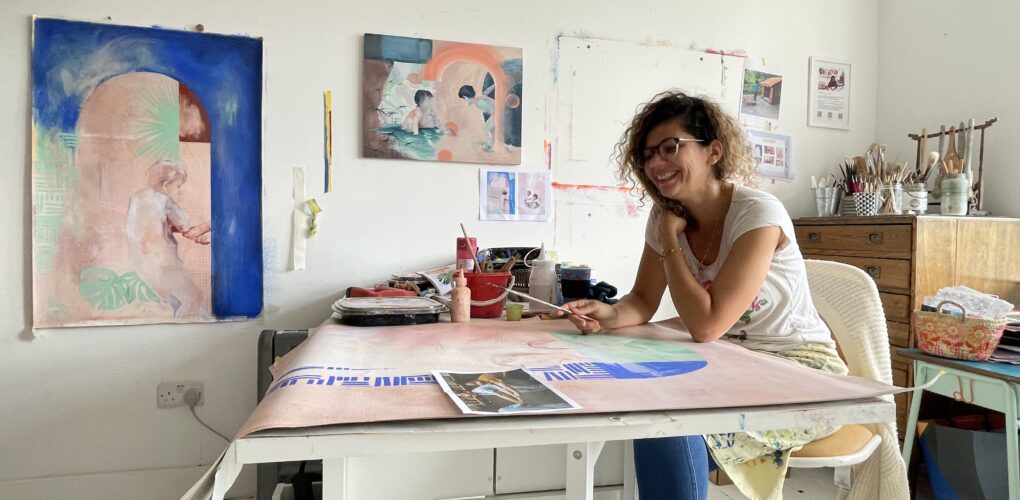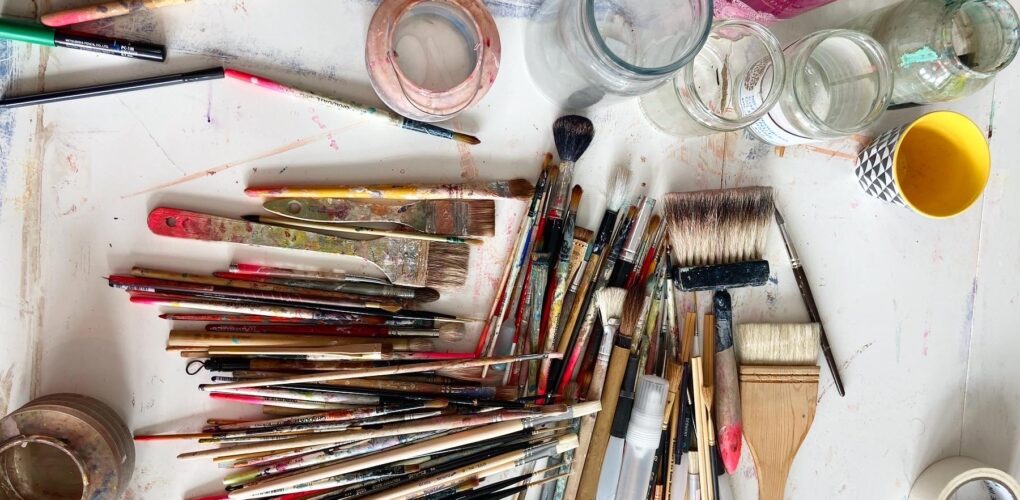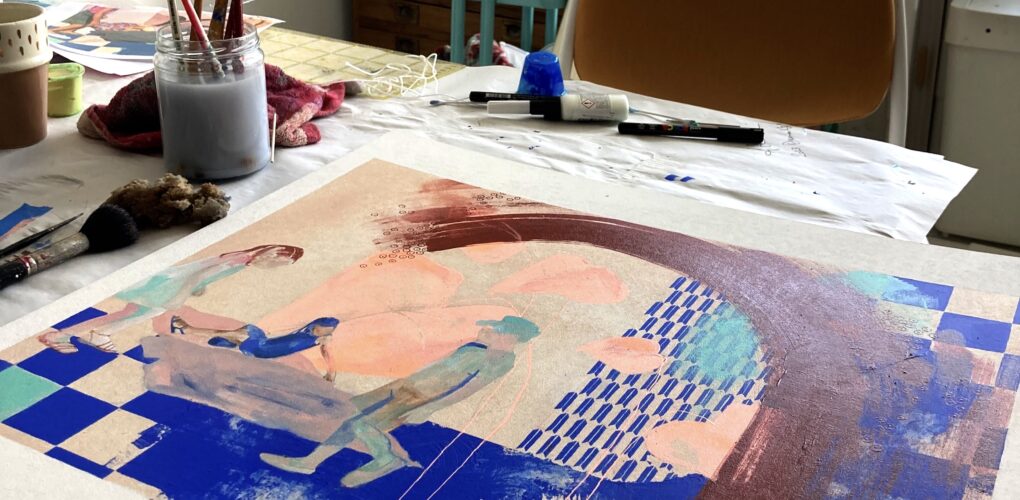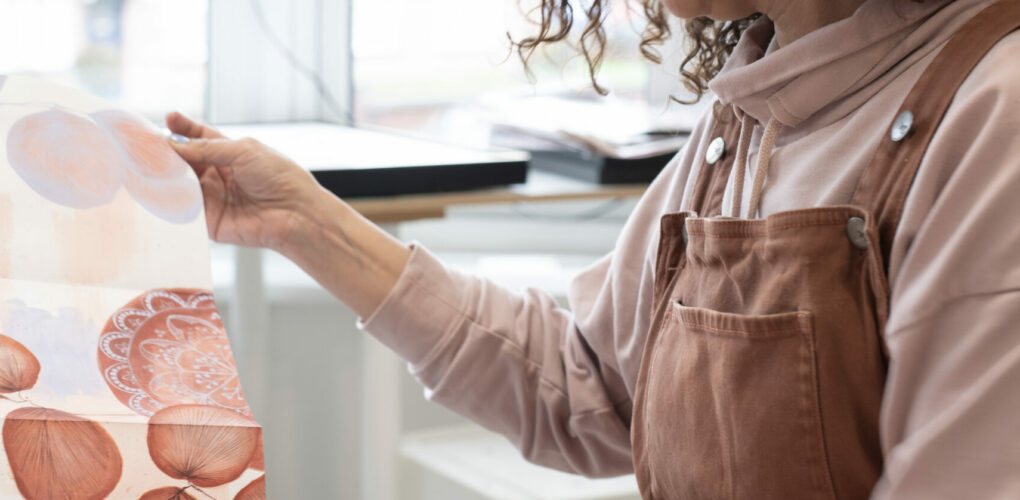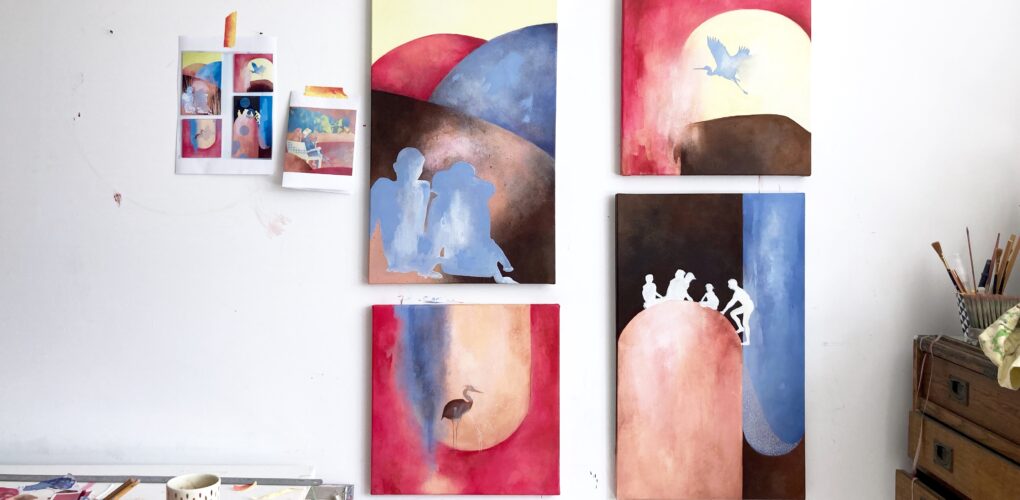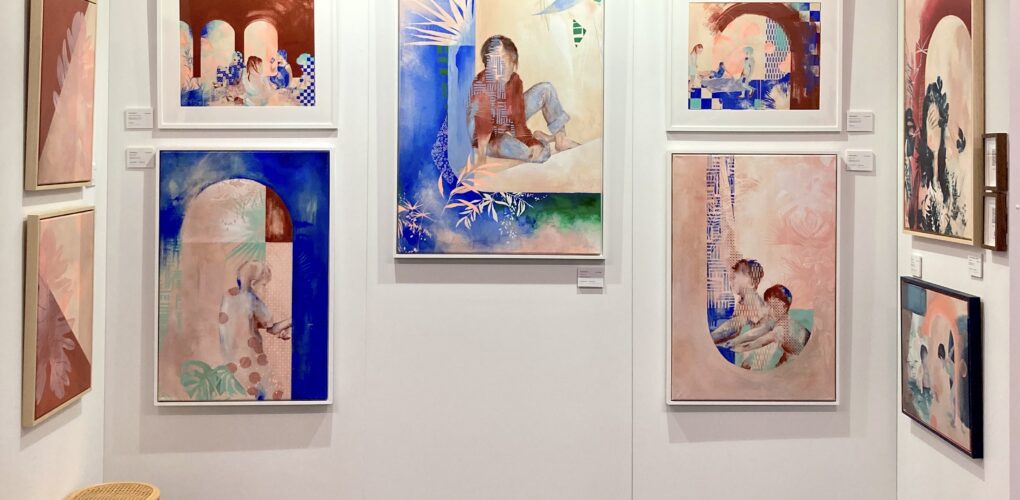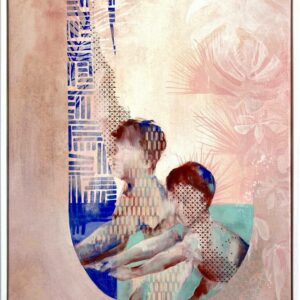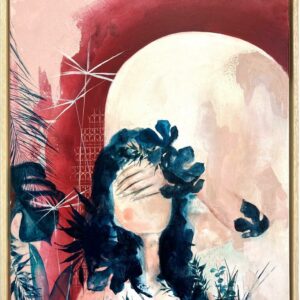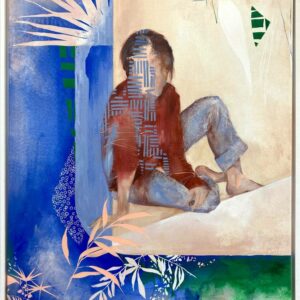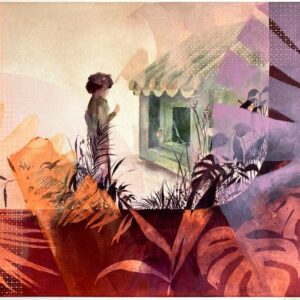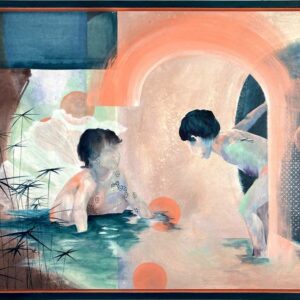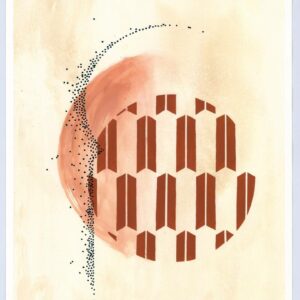One to Watch
 Assia Bennani’s Eclectic World
Assia Bennani’s Eclectic World
London-based painter Assia Bennani creates ethereal and captivating portraits, blending dreams and reality. Combining the real with the imagined and the rough with the refined, she invites the viewer to consider the nuance of everyday experience. Since receiving her degree in studio art, Assia has exhibited at The Other Art Fair and taken part in numerous group exhibitions in London and Hong Kong. Keep reading to learn more about the multicultural journey that shapes Assia’s art practice.
Tell us about who you are and what you do. What’s your background?
My name is Assia, and I’m a Moroccan-born artist living in London. My background is in Interior Design and decorative wall painting. Over the last decade, I’ve gradually shifted my career toward fine art, and I’m now fully dedicated to my painting practice. I have been living in London since 2019. Before that, Hong Kong was my home for 13 years, and Paris for 7 years, where I studied and started my early career in design.
What does your work aim to say? What are the major themes you pursue in your work? Can you share an example of a work that demonstrates this?
My paintings are a playful space of exploration where I aim to create visual bridges between different realities, cultures, and time frames in a dreamlike atmosphere. Being exposed to several cultures other than my own has made me think a lot about how cultures can interact and complement each other and how they influence our beliefs. Through my work, I aim to share with the audience a positive experience of integration by showcasing how diversity can create resilience and beauty. I take inspiration from my multicultural journey but also from memories, architectural details, or daily scenes around me.
One piece that exemplifies this is Barefoot. This painting is part of a colorful series of park scenes that initially took place in Kew Garden in London but evolved in many other places. Figuration sometimes plays with abstraction, rough textures with delicate details, and vibrant colors with warm, earthy tones. A rhythm arises from the composition. I like the poetic atmosphere of this painting; there is something very soft and intense at the same time.
Can you walk us through your process for creating a work from beginning to end?
I observe people around me, savoring little details and quiet moments. I collect photos, take notes, or make quick sketches. I will then draft a scene on a sketchbook or Procreate. During the process, I include different elements, details, and architectural references from other places or time zones. I try not to control the outcome at this point. I let my mind wander where it desires. I believe there’s always a reason for what we do, whether conscious or subconscious. Most of the time, I work in series at the maximum capacity of my little studio. Also, the different stages of the paintings require different tools, so working several simultaneously saves me time and helps me better organize my space and time. The paintings are always in conversation and connect through the color palette, common visual elements, or composition. Backgrounds are often rough and textured, made with large tools I use in my mural projects. I usually paint standing with my entire body engaged. As I shift to the foreground, the rhythm slows down. Sitting, I swap mural brushes for miniature ones, adopting a studied, controlled, and fully focused gesture. The practice becomes repetitive and meditative. This shift of energy is important: it echoes life’s diverse phases. I try to find a balance within them constantly.
Who are your biggest influences, and why?
Two pivotal events and artists have profoundly influenced my art journey and perception. The first one occurred in Hong Kong when I discovered the abstract works of Japanese artist Sachiko Kazami, titled “Sweet Chaos.” The color and composition were so vibrant that you could taste them. Desiring to immerse myself in this energy every day from now on, I purchased my very first artwork, preserving this memory of joy. It has left an indelible imprint on my senses. A few years later, in Tokyo, I attended a retrospective exhibition of the artist Chiharu Shiota, renowned for her monumental poetic installations. The immersive experience and the incredible scenography moved me so much. In a fast-paced world accustomed to instant gratification, feeling the weight of the time dedicated to the work was a healing revelation. It is fascinating that an artwork can have such power over us. It’s beyond words; for me, it’s the ultimate way of communicating.
How does your work comment on current social and political issues?
In a world that tends to be more and more polarised, I wish to hold a space for connections and nuances. I wish to hold a space for slowness in a world that tends to move faster. I wish to hold a space for small incremental changes in a world that tends to value only big things. I believe that from gentleness, energy arises. I believe that the energy to create some small changes, compounded over time, yields more sustainable and kinder results.
How do you hope viewers respond to your works? What do you want them to feel?
I hope the viewer can feel comfort and peace through my work and perhaps reflect on the richness of their experiences. However, I’ve observed that people interpret art based on their needs, and I prefer not to impose too much on the outcome. Sometimes I find selecting titles challenging as they often reveal too much. I believe in experiencing art without excessive verbal guidance, allowing the mind to wander and the soul to connect. I don’t mind if there is a gap between what led me and what they see.
If you couldn’t be an artist, what would you do?
If I couldn’t be an artist, my alternative dream job would be in art scenography. When attending a show, I’m equally attuned to the exhibition setup as I am to the artwork itself. But I’m pretty sure I would have shifted to making art at some point.
What was the best advice given to you as an artist?
“When you do your first body of work, you drop a dot in the universe. When you do your second body of work, you define a direction. When you do your third body of work, you draw a triangle. So make sure you draw a large space where it feels good and large enough to evolve.” I love this idea of spaciousness––allowing yourself and the work to evolve. It is not advice I received directly but heard in an interview with French singer Matthieu Cheddid. He was talking about music, but it can be transposed to any creative process.
